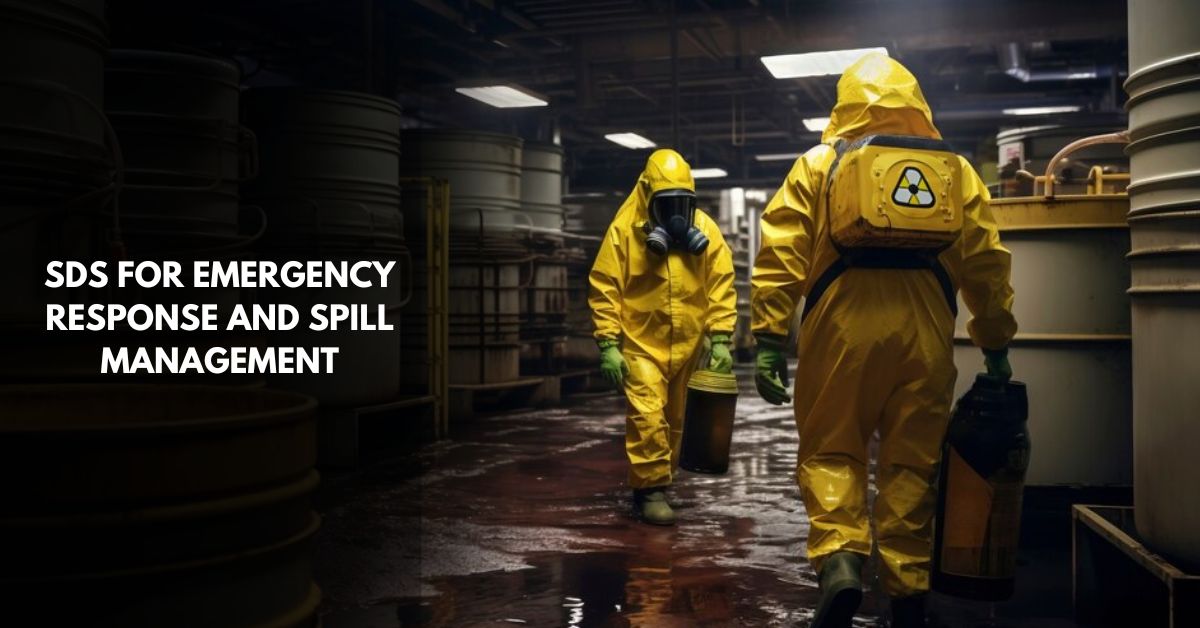Safety Data Sheets (SDS) are crucial documents that provide comprehensive information about the hazards of chemicals, safe handling procedures, and emergency response measures. In the event of a chemical spill or emergency, prompt and informed action is essential to minimize risks to health, safety, and the environment. This article explores the specific aspects of SDS related to emergency response and spill management, highlighting key considerations, procedures, and best practices for effectively handling chemical incidents. SDS services ensure that organizations have access to updated and compliant safety information, facilitating proactive risk management and regulatory adherence.
Importance of SDS in Emergency Response
Safety Data Sheets serve as vital resources during chemical emergencies by providing detailed guidance on the properties and hazards of chemicals present in the workplace or environment. Emergency responders, including firefighters, hazmat teams, and facility personnel, rely on SDS to assess risks, determine appropriate response actions, and protect themselves and others from exposure to hazardous substances.
Key Components of SDS Relevant to Emergency Response
1. Hazard Identification:
SDS provide information on the physical, health, and environmental hazards associated with chemicals. This includes details on toxicity, flammability, reactivity, and potential environmental impacts. Clear hazard identification enables responders to prioritize actions and implement appropriate containment and mitigation measures during emergencies.
2. Emergency Contact Information:
SDS typically include emergency contact numbers for the chemical manufacturer, supplier, or responsible party. These contacts provide access to expert advice and guidance on emergency response procedures, spill containment strategies, and medical treatment recommendations in case of exposure or accidents involving hazardous chemicals.
3. First Aid Measures:
Detailed first aid measures outlined in SDS assist responders in providing immediate care to individuals affected by chemical exposures. This includes specific instructions for different routes of exposure (e.g., inhalation, ingestion, skin contact) and recommended medical treatments to alleviate symptoms or mitigate the effects of exposure until professional medical assistance arrives.
4. Spill and Leak Procedures:
SDS contain spill response procedures tailored to the characteristics of the chemical and the spill scenario. These procedures detail containment measures, such as using absorbent materials or containment booms to prevent the spread of hazardous substances. Information on personal protective equipment (PPE) requirements for responders is also provided to ensure safe handling during cleanup operations.
5. Firefighting Measures:
For chemicals that pose fire hazards, SDS include firefighting measures to guide responders in extinguishing fires safely. This includes information on suitable extinguishing agents, firefighting techniques, and precautions to prevent chemical reactions or thermal decomposition that could exacerbate the fire or release hazardous vapors.
6. Handling and Storage Recommendations:
Preventive measures outlined in SDS help minimize the risk of chemical emergencies by providing guidelines for safe handling, storage, and transportation of hazardous substances. Proper storage conditions (e.g., temperature, ventilation) and compatibility considerations (e.g., incompatible chemicals) are emphasized to prevent accidental releases or exposures in the workplace.
Best Practices for Emergency Response and Spill Management
1. Preparedness Planning:
Develop and maintain emergency response plans that incorporate information from SDS, including spill response procedures, evacuation routes, and communication protocols. Conduct regular drills and training exercises to ensure that personnel are familiar with emergency procedures and can respond effectively to chemical incidents.
2. Risk Assessment:
Conduct thorough risk assessments to identify potential hazards associated with chemicals used or stored on-site. Use SDS information to evaluate risks, implement preventive measures, and prioritize resources for emergency preparedness, including appropriate PPE and containment equipment.
3. Communication and Coordination:
Establish clear communication channels between internal responders, external emergency services, and regulatory authorities. Share relevant SDS information, including chemical identities, hazards, and response actions, to facilitate coordinated efforts and prompt decision-making during emergencies.
4. Personal Protective Equipment (PPE):
Ensure that responders have access to and are trained in the use of appropriate PPE specified in SDS. This may include gloves, goggles, respirators, and protective clothing designed to minimize exposure to hazardous chemicals and prevent contamination during response operations.
5. Environmental Considerations:
Consider potential environmental impacts when responding to chemical spills or emergencies. Implement containment measures to prevent chemical releases into waterways, soil, or air, and adhere to regulatory requirements for reporting and remediation of environmental incidents.
Conclusion
In conclusion, Safety Data Sheets play a crucial role in guiding emergency response and spill management efforts by providing essential information on chemical hazards, handling procedures, and safety precautions. By leveraging SDS to inform preparedness planning, risk assessment, and response actions, organizations can enhance their ability to mitigate risks, protect personnel and the environment, and maintain compliance with regulatory requirements. Effective implementation of SDS protocols ensures a prompt and coordinated response to chemical emergencies, safeguarding health, safety, and sustainability in the workplace and community.




